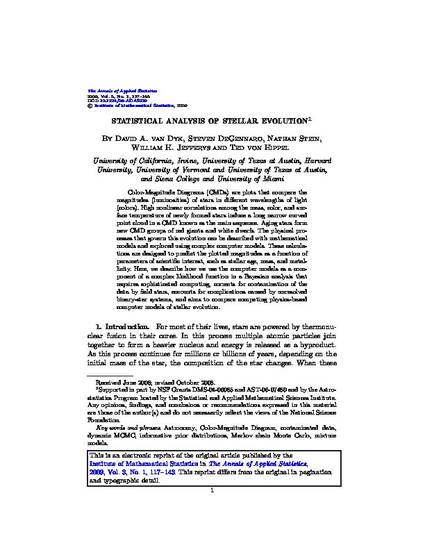
Color-Magnitude Diagrams (CMDs) are plots that compare the magnitudes (luminosities) of stars in different wavelengths of light (colors). High nonlinear correlations among the mass, color, and surface temperature of newly formed stars induce a long narrow curved point cloud in a CMD known as the main sequence. Aging stars form new CMD groups of red giants and white dwarfs. The physical processes that govern this evolution can be described with mathematical models and explored using complex computer models. These calculations are designed to predict the plotted magnitudes as a function of parameters of scientific interest, such as stellar age, mass, and metallicity. Here, we describe how we use the computer models as a component of a complex likelihood function in a Bayesian analysis that requires sophisticated computing, corrects for contamination of the data by field stars, accounts for complications caused by unresolved binary-star systems, and aims to compare competing physics-based computer models of stellar evolution.
Dr. von Hippel was not affiliated with Embry-Riddle Aeronautical University at the time this paper was published.